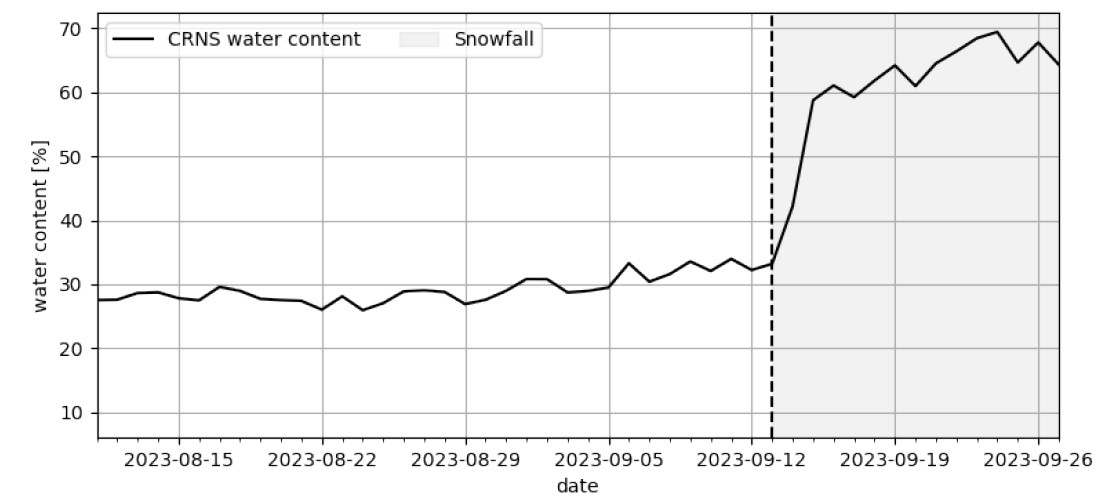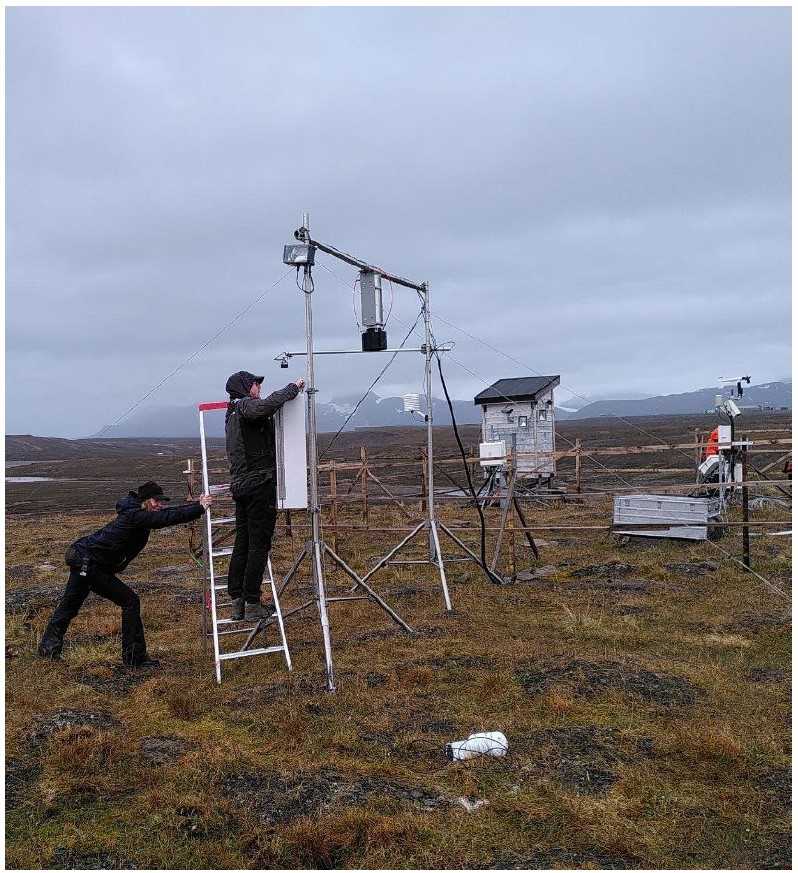by Lasse Hertle, Helmholtz-Centre for Environmental Research
Most of the goals outlined in the project proposal have been reached. The most important objective, the installation of the cosmic-ray neutron sensor (CRNS) at the Bayelva site, has been achieved. The sensor has been delivering functional and plausible data of hectare-scale snow and soil moisture variation. There is only a small set-back in the sensor installation that currently prevents us from remotely receiving real-time data. We misjudged the length of Ethernet cable required to connect the sensor to the existing IT infrastructure at Bayelva. Therefore, the shielded cable we had brought was too short and had to be exchanged by a less shielded one. After we left the site, we were informed that our sensor was mysteriously interfering with existing measurements using time-domain reflectivity (TDR) at Bayleva. Through intensive debugging it became clear that the disturbance was triggered by data transmissions going through our Ethernet cable. Thus, we had to deactivate the data transmission and we are planning to replace the cable during one of our next visits. For now, the sensor is operating and the data could be read out by local AWIPEV staff manually upon request.

To accurately infer the surrounding water content from the measured neutron counts, the sensor needs to be calibrated once for soil moisture and once for snow. For the soil moisture calibration, soil samples were taken at various points in the sensor footprint. This task proved more difficult for the rocky Bayelvian soil than we initially anticipated. These difficulties were caused by multiple factors. Firstly, the ground around Bayelva is very heterogeneous, such that numerous samples in various regions were necessary to cover the sensor footprint representatively. Secondly, the terrain and the soil composition itself had an adverse effect on our ability to take samples. Specifically, the abundance of medium-sized rocks throughout the soil hindered us from easily obtaining soil samples of a controlled volume. Lastly, there was a risk of damaging the vegetation mat by the invasive sampling method, so we were committed to take as few samples as possible. We were further surprised by rain events during the sampling campaign, which increased the risk of water intrusion into our soil samples. Nevertheless, we were able to take an acceptable number of samples to determine the bulk density. Moreover, due to the aforementioned weather conditions the samples were taken before the CRNS was set up at its final position, which complicates the interpretation of the calibration results. A reason we could not sample while the sensor had been installed was again due to rainy conditions. These we also experienced during the installation, as can be seen in Figure 2. For a more reliable calibration campaign, a dedicated site visit would be required and is planned for summer 2024. The snow calibration campaign is planned for spring 2024.

We also planned to map the spatial heterogeneity of soil moisture around the Bayelva site using mobile CRNS measurements. We used the CRNS instrument in a mobile mode at five different locations near Bayelva as a precursor to the final installation. Although we were only able to visit the five locations for a few hours each, the measurements were partly successful. As the detector is meant to be a stationary probe, it typically takes several hours to obtain a sufficient signal-to-noise ratio. During that time, we experienced several rainfall events, which might have changed the soil moisture dynamics dramatically and reduced the comparability of the locations. Still, the data we collected around the Bayelva site is a good start for the first CRNS probe on Svalbard, and we would be interested in further spatial mapping of environmental water content with a more dedicated sensor system in 2024.
In conclusion, we have reached our main goal of installing a cosmic-ray neutron sensor at the Bayelva site. The sensor is functional and the data output plausible and useful. The points where we did not fully realise our plans are minor and we are planning to solve them quickly and efficiently during our next visits.



























